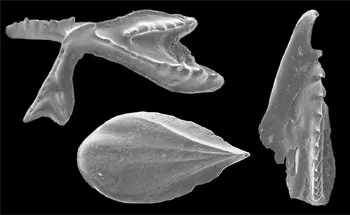Lund University Microfossil Laboratory
Welcome to the finest laboratory in the world for processing microfossils! Through decades of continuous refinement and development, primarily by Professor Emeritus Lennart Jeppsson, we are now able to process very large samples (up to more than 100 kg each) and get very concentrated sample residues that will significantly decrease picking time. We use buffered and diluted (c. 10%) acetic acid that will easily digest different types of limestone without etching phosphatic microfossils. After dissolving the rock slabs the residues are treated further, for example magnetic and/or density separation, depending on what end product is requested. The technique is primarily developed for phosphatic microfossils (such as conodonts and fish scales) but works very well also for organic-walled microfossils such as scolecodont, chitinozoans, and graptolites. Other rest products obviously include silicified, phosphatized and pyritized fossils and acid resistant mineral grains. The head of the laboratory, Git Klintvik Ahlberg, has years of experience of extracting acid resistant microfossils.
Publications
Jeppsson, L. 2005. Biases in the recovery and interpretation of micropalaeontological data. In M.A. Purnell & P.C.J. Donoghue (eds.): Conodont biology and phylogeny – interpreting the fossil record. Special Papers in Palaeontology 73: 57–71.
Jeppsson, L., Anehus, R., Fredholm, D. 1999. The optimal acetate buffered acetic acid technique for extracting phosphatic fossils. Journal of Paleontology 73: 964–972.




